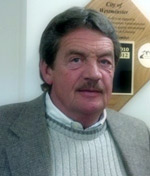Five Minutes With Audio & Video Home
fiveminuteswith
HVAC retrofits save Colorado city more than $400,000
Jerry Cinkosky, Facilities Manager for the City of Westminster, Colo., discusses an HVAC retrofit project that saved the city more than $400,000.

Jerry Cinkosky
Facilities Manager
City of Westminster, Colo.
1. Describe briefly the HVAC retrofit projects at city hall and public safety center?
The energy performance contract did several things at both buildings: optimization of makeup air runtimes; hardwiring of thermostats; boiler outdoor air temperature resets were installed; upgrades to digital control systems; boiler replacements; added capacity of heat exchangers; and pump motor replacements. In addition, more work was completed at other facilities around the city.
2. What was your role in the decision to replace the equipment at the facilities?
We were heavily involved in the recommendation to change out equipment. Once our decision-makers became aware of the potential for savings through retrofits, they were convinced of the value to our organization. Prior to that, many of our facilities had long lists of deferred maintenance that caused our trades people to react to emergencies on a regular basis.
3. What role did you play in product specification for the projects?
Our HVAC technicians and foreman helped select the right equipment, and weighed in heavily with the sequence of operations and the controls programming. In the end, this was a good thing because now they know, understand, and buy in to the changes that were made.
4. What kinds of challenges did the buildings present during the project?
The primary challenges were common ones. The public safety center is a 24/7 facility so scheduling the work without disruptions to the daily activities was a challenge. Similarly, our city hall is a high profile and public facility. Coordinating the work and maintain good communications with everyone effected was probably the biggest challenge we had.
5. Were you satisfied with the amount of savings generated from the projects?
By and large, the project exceeded our savings expectations in terms of energy consumed. But more surprising was the resulting time that our technicians gained by no longer needing to chase emergencies around the city. By replacing a lot of our outdated equipment, we now have the time to conduct preventive maintenance, which not only extends the useful life of the equipment - it also allows us to maintain the equipment at the highest energy efficiency. Getting ahead of our deferred maintenance has allowed us to get back to what our job is really all about - to maintain comfortable conditions for our customers. One example of this comes from our control system. Before the retrofit project, we would first know when there was a problem when we received the hot and cold calls. Now, our technician can look at the building automation remotely and is sometimes able to make changes before the customers even know there is an issue.
6. How have the projects impacted your staff in terms of workload?
Like I said, the greatest impact is that it has allowed us to get ahead of our deferred maintenance. Having the time to pre-emptively maintain equipment and fine-tune their operations makes any issues that do arise quickly addressable. Now, we can extend the life of our equipment, save energy, and keep our customers comfortable. That is a lot better than constantly addressing emergency after emergency.
posted: 1/31/2014








